Related Research Articles
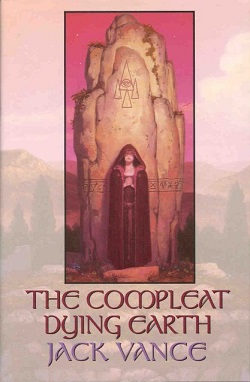
Dying Earth is a fantasy series by the American author Jack Vance, comprising four books originally published from 1950 to 1984. Some have been called picaresque. They vary from short story collections to a fix-up, perhaps all the way to novel.

The Illustrated Man is a 1951 collection of 18 science fiction short stories by American writer Ray Bradbury. A recurring theme throughout the stories is the conflict of the cold mechanics of technology and the psychology of people. It was nominated for the International Fantasy Award in 1952.
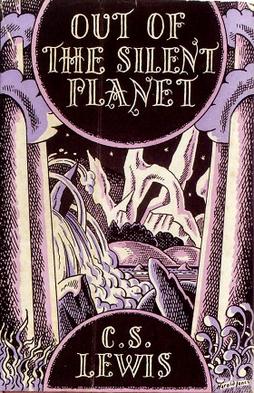
Out of the Silent Planet is a science fiction novel by the British author C. S. Lewis, first published in 1938 by John Lane, The Bodley Head. Two sequels were published in 1943 and 1945, completing the Space Trilogy.
"The Machine Stops" is a science fiction short story by E. M. Forster. After initial publication in The Oxford and Cambridge Review, the story was republished in Forster's The Eternal Moment and Other Stories in 1928. After being voted one of the best novellas up to 1965, it was included that same year in the populist anthology Modern Short Stories. In 1973 it was also included in The Science Fiction Hall of Fame, Volume Two.
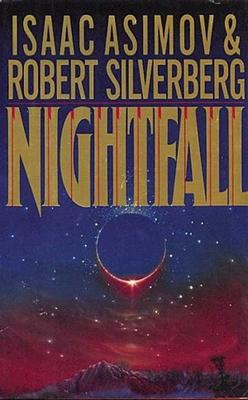
"Nightfall" is a 1941 science fiction short story by the American writer Isaac Asimov about the coming of darkness to the people of a planet ordinarily illuminated by sunlight at all times. It was adapted into a novel with Robert Silverberg in 1990. The short story has appeared in many anthologies and six collections of Asimov stories. In 1968, the Science Fiction Writers of America voted "Nightfall" the best science fiction short story written prior to the 1965 establishment of the Nebula Awards and included it in The Science Fiction Hall of Fame Volume One, 1929–1964.

The Outward Urge is a science fiction fix-up novel by British writer John Wyndham. It was originally published with four chapters in 1959. A fifth chapter, originally published in 1961 as the separate short story "The Emptiness of Space", was included in later versions.
"Venus and the Seven Sexes" is a science fiction story by American writer William Tenn. It was first published in the anthology The Girl with the Hungry Eyes, and Other Stories in 1949, and then in 1953 in the anthology Science-Fiction Carnival by Fredric Brown and Mack Reynolds.

Inconstant Moon is a science fiction short story collection by American author Larry Niven that was published in 1973. "Inconstant Moon" is also a 1971 short story that is included in the collection. The title refers to "O, swear not by the moon, th' inconstant moon", a quote from the balcony scene in William Shakespeare's Romeo and Juliet. The collection was assembled from the US collections The Shape of Space and All the Myriad Ways.
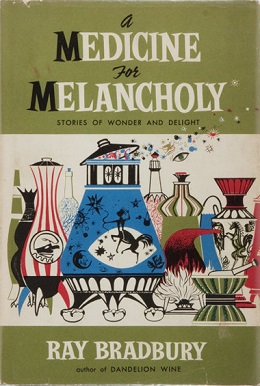
A Medicine for Melancholy (1959) is a collection of short stories by American writer Ray Bradbury. It was first published in the UK by Hart-Davis in 1959 as The Day It Rained Forever with a slightly different list of stories. All of the included stories were previously published.
"The Long Rain" is a science fiction short story by American writer Ray Bradbury. This story was originally published in 1950 - under a different title indicative of its ending - in the magazine Planet Stories, and then in the collection The Illustrated Man. The story tells of four men who have crashed on Venus, where it is always raining.

The Stories of Ray Bradbury is an anthology containing 100 short stories by American writer Ray Bradbury, first published by Knopf in 1980. The hundred stories, written from 1943 to 1980, were selected by the author himself. Bradbury's work had previously been collected in various compilations, such as The Martian Chronicles and The October Country, but never in such a large volume or spanning such a long period of time.

Spin is a science fiction novel by American-Canadian writer Robert Charles Wilson. It was published in 2005 and won the Hugo Award for Best Novel in 2006. It is the first book in the Spin trilogy, with Axis published in 2007 and Vortex published in July 2011.

The Venus Equilateral series is a set of 13 science fiction short stories by American writer George O. Smith, concerning the Venus Equilateral Relay Station, an interplanetary communications hub located at the L4 Lagrangian point of the Sun-Venus system. Most of the stories were first published in Astounding Science Fiction between 1942 and 1945.

Bradbury Stories: 100 of His Most Celebrated Tales (2003) is a collection of short stories by Ray Bradbury. Bradbury wrote an introduction to the collection where he speaks about some of the inspirations, influences and among other things, the comedy duo Laurel and Hardy. The collection repeats no stories from The Stories of Ray Bradbury.
"Super-Neutron" is a science fiction short story by American writer Isaac Asimov, originally published in the September 1941 issue of Astonishing Stories, and included in the 1972 collection The Early Asimov. Asimov originally intended the story to be the first in a series, but was unable to come up with any further story ideas.

Classic Stories 2: From A Medicine for Melancholy and S Is for Space is a semi-omnibus edition of two short story collections by American writer Ray Bradbury, A Medicine for Melancholy and S is for Space. Stories from the original collections that are included in Classic Stories 1 are omitted.
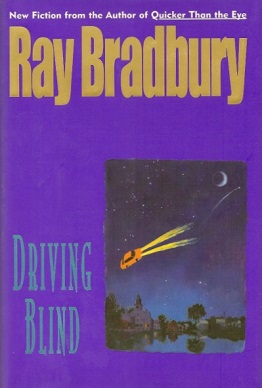
Driving Blind is a 1997 short story collection by American writer Ray Bradbury. All but four of the stories are original to this collection.
The following is a list of works by Arthur C. Clarke.

The Illustrated Man is a 1969 American dark science fiction drama film directed by Jack Smight and starring Rod Steiger as a man whose tattoos on his body represent visions of frightening futures. The film is based on three short stories from the 1951 collection The Illustrated Man by Ray Bradbury: "The Veldt," "The Long Rain," and "The Last Night of the World."
"The Rocket" is a science fiction short story by American writer Ray Bradbury. It is also included in The Illustrated Man, a collection of short stories by Ray Bradbury.
References
- ↑ Publication history for "All Summer in a Day" at Author Wars web site. "This text is available under a Creative Commons License and may have been adapted from the All Summer in a Day bibliography at the Internet Speculative Fiction Database". Retrieved from http://authors.wizards.pro/books/titles/58363/all-summer-in-a-day.
- ↑ All Summer In A Day Pt. 3 on YouTube